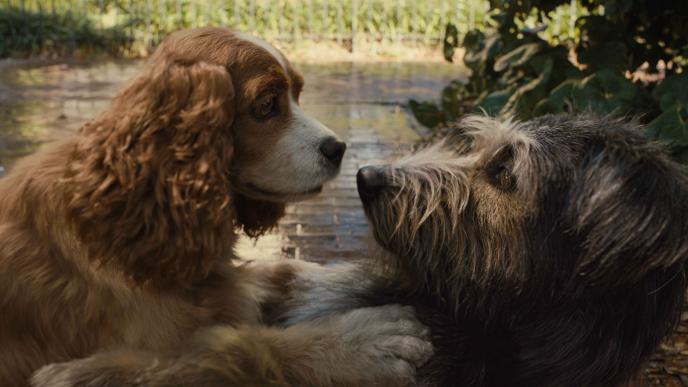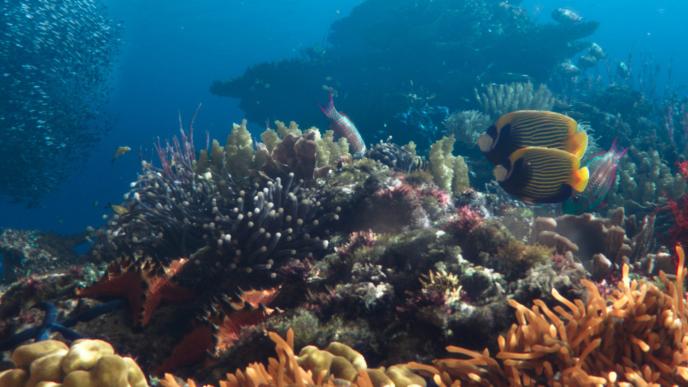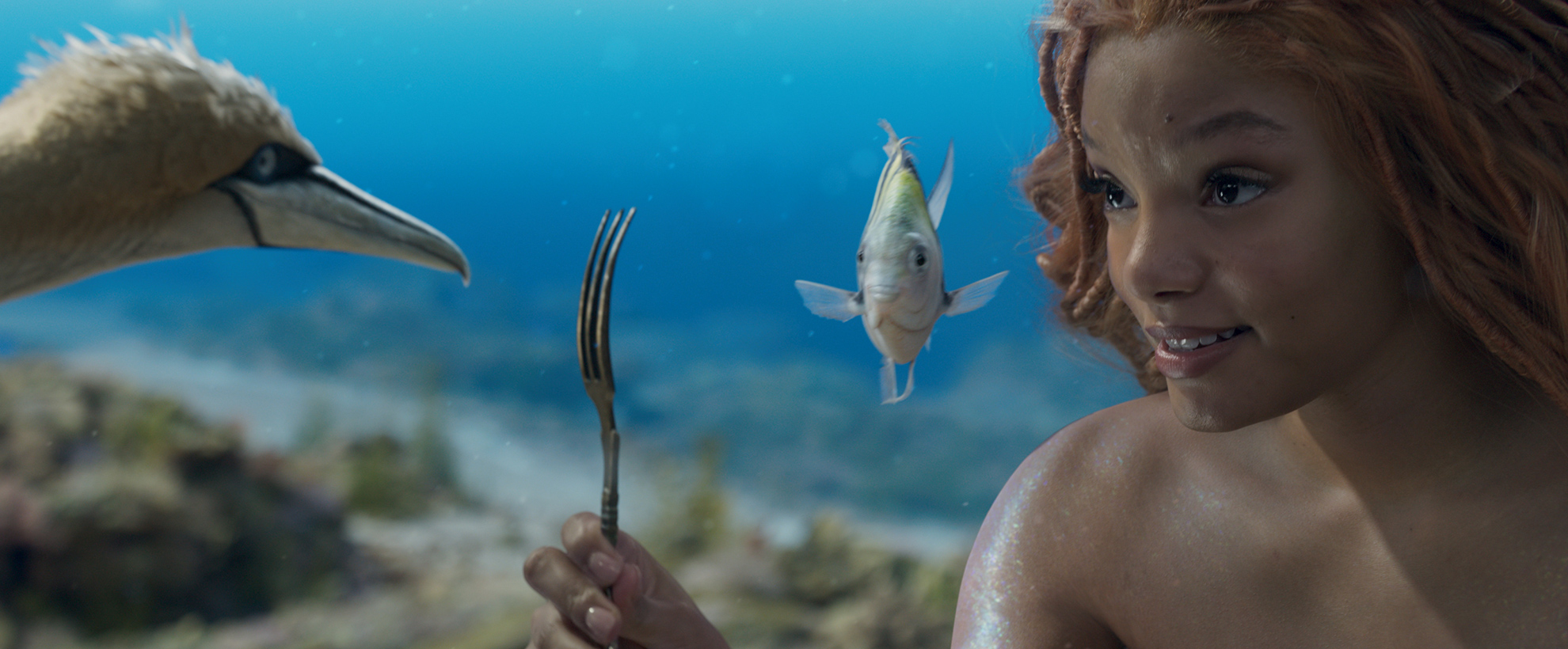
The Little Mermaid
Framestore provided over 550 shots of visual effects for Walt Disney Studios’ The Little Mermaid, directed by Rob Marshall. Led by Visual Effects Supervisor Andy Kind, the studios across London, Montréal and Mumbai created Ariel’s underwater kingdom, the merpeople who live there (including Ariel, King Triton, and her six sisters), as well as her best friends Sebastian, Flounder, and Scuttle.
Fathoms Below
“Preparations for the underwater environments began almost a year before we actually started filming,” states Kind. “Working hand in hand with our brilliant Art Department, we spent a long time developing virtual camera angles, figuring out how to translate a 2D shoot to a 3D environment.” The visual effects team collaborated with virtual production supervisors, who form what is now Framestore’s dedicated Pre-Production offering, Framestore Pre-Production Services (FPS).
“We got a great brief from Production VFX Supervisor Tim Burke on the look and feel of Ariel’s kingdom, but there was still a degree of freedom for us to interpret the designs, develop the underwater look, and establish a coherent world,” explains Environment Supervisor Dean O'Keeffe. “We also had to map out how those key locations fit together within the wider world, so it’s one cohesive environment instead of two or three separate sets.”
“One of the first challenges we encountered was building a large variety of 3D coral,” explains O’Keeffe. “As well as concept designs we received a number of coral 3D scans along with reference photography. From this reference it became clear that we needed a way to generate a large volume of different coral species, with varying complexity and a range of scales and shapes.” The team determined at an early stage that modelling and sculpting such complex shapes by hand was not going to be the most efficient or adaptable method to build the coral, so they developed a number of tools to generate the coral procedurally. The coral generation tools enabled the artists to modify coral shapes efficiently, with the high level of control that is essential when responding to creative notes.
“Lighting was another huge challenge for us, for all of the underwater scenes,” comments Visual Effects Supervisor Andy Kind. “It’s completely fictional laws of physics - in reality, light from the surface wouldn’t make it to the ocean floor, so we had to write our own laws which dictate the lighting, and how it would refract through the water.”
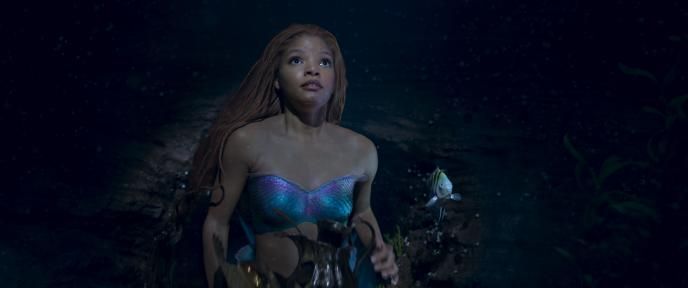
Part of Your World
Ariel (Halle Bailey) is fascinated by the human world, and a keen collector of items from above the surface. She hides her collection from her disapproving father in a secret grotto, which famously acts as the setting for one of the film’s most notable music numbers, ‘Part of Your World’. When it came to designing the look of this space, Production Designer John Myhre drew inspiration from the sculpted walls of Antelope Canyon.
“Our first task was to identify the key features, such as the shape and form of the environment, and the textural qualities of the rocky surfaces,” explains Environment Supervisor Dean O'Keeffe. “We then experimented with the integration of this terrain, and recognisable underwater features such as sand, coral and underwater foliage.” As the environment developed, the team established the correct balance of these key elements to complement the features of Antelope Canyon, but set it apart as an underwater terrain. “It also had to feel different from the rest of the kingdom,” clarifies O’Keeffe.
The interior of Ariel's Grotto is an environment limited in space, which presented a challenge when positioning cameras and composing shots. The physical set was constructed in multiple parts, and this structure was replicated during the build of the 3D scene. Breaking down the construction of the Grotto into stages enabled sections to be hidden or even restaged depending on the shot requirements, and meant that the team did not have to build and maintain several different versions of the Grotto.
Dressing the Grotto required the placement of a variety of props, shells, barnacles, corals and moving foliage. “In addition to the placement of the dressing, it was important to have control over their speed of movement,” adds O’Keeffe. “The Environments Department was able to add controls to the dressing that allowed the speed of movement to be controlled easily and set independently between shots.”
Together, with Framestore’s Art Department and Visual Development teams, they created the setting, fleshing it out with over 600 individual props, to make Ariel’s collection.
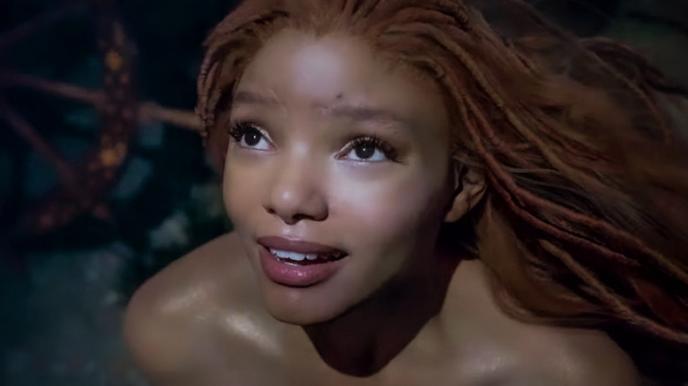
Under the Sea
As Ariel laments her life as a mermaid, Sebastian attempts to lift her spirits with a song about the joys of life below the waves (‘Under the Sea’), and is joined by an ensemble of sea creatures. Director Rob Marshall’s background in choreography featured heavily in the preparation for the scene - establishing how all the moving parts would work together. “It’s a musically-driven film, so the camera is always moving, everything flows,” explains Kind. “We had a team of modellers on set, using cardboard structures to block out the large objects that need to move during the sequence.”
The Visual Effects team began with concept sketches, producing movements and visuals inspired by different sea creatures. Walt Disney Studios then commissioned a New York dance troupe to learn the choreography and perform it in costume, within a huge set piece. Framestore’s Animation teams took that footage as reference, and translated the human movements into animals, ultimately creating over 30 species of sea creature, and hundreds of creatures in total.
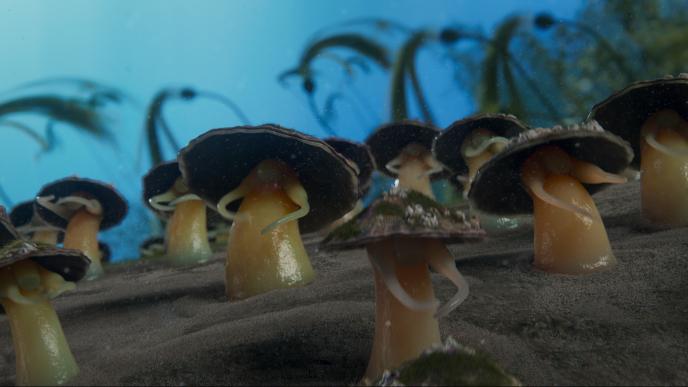
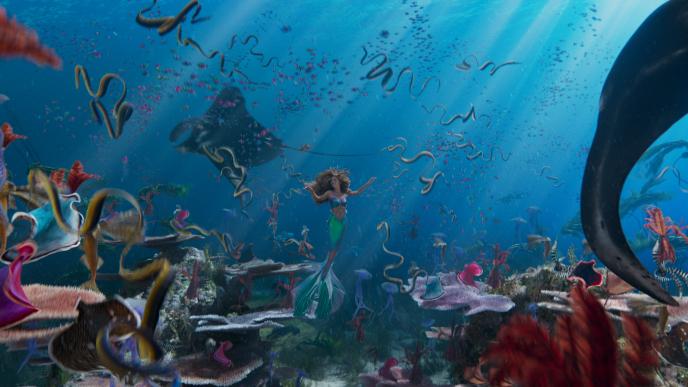
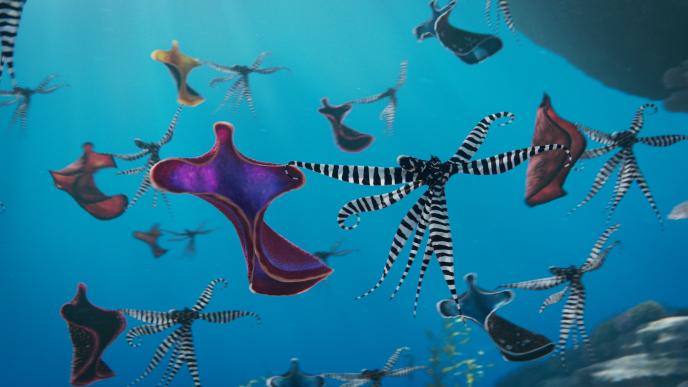
“The challenge of technically creating hundreds of bespoke creatures and their individual dances is a massive undertaking that I personally have never seen before,” adds Animation Supervisor Kayn Garcia. “Bringing together the best of our creative and technical minds, we pushed and designed new tools to enable our artists to manage hundreds of unique performances and creatures within a single shot.”
“It was such an interesting process,” comments Kind. “Walking the line between human and animal movement - how do I take this beautiful dancer, and translate their movements into a seahorse, or a starfish, and make it feel authentic?”
“The musical timing was paramount and we had to get it just right, every beat and frame counted,” says Garcia. “On top of this we had our hero Ariel, played wonderfully by Halle Bailey, who was filmed on set in front of a green screen, attached to a gyroscopic crane.”
“Ariel's digital double is one of the most complicated assets we have ever built, replacing all of Halle's body, and at times also her face, into her mermaid form,” adds Kind. “Seamlessly blending into a full digital double as she swims through this intricate fully CG underwater world. The amount of computer and people power to achieve just this sequence is mind blowing.”
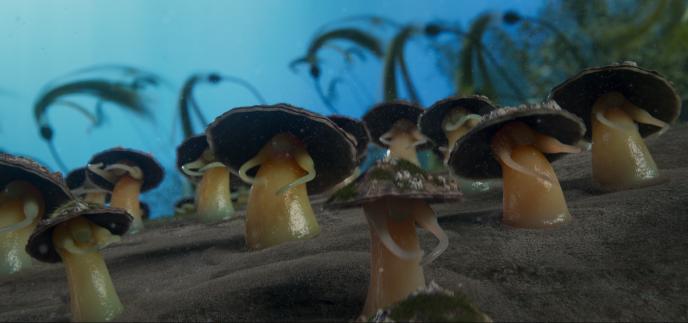

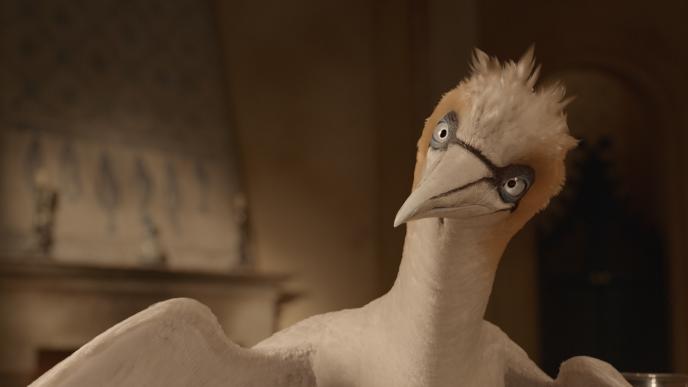

The Three Amigos
Central to the story of the film are Ariel’s three best friends, Sebastian, Flounder, and Scuttle. Translating the original 2D character to photoreal 3D characters presented a challenge for Framestore’s animators, in particular for Sebastian, as the 1989 animated feature sees him with exaggerated, humanised expressions. “It was definitely a balancing act, allowing him to be expressive, while also being realistic about what each creature could conceivably do,” expands Grillo. “The thing about Sebastian especially is that he’s so minimal, he’s a set of eyes and a body, but he’s able to give so much range during his performance - he’s an emotional character and you’re really able to see that all through his eyes, timing, and movement.”
“It was a similar journey for Flounder,” adds Kind. “We started out very close to the 1989 animation in terms of look, and ended up taking more inspiration from a sergeant major fish.”
Scuttle, Ariel’s bird friend, was slightly more straightforward. “As with all of Ariel’s friends we began with concepts, but Scuttle really developed through the iterations,” comments Kind. The animation team collaborated closely with Walt Disney Studios to establish the final look for Scuttle, creating a feather system within Framestore’s groom tool, Fibre.
While earlier renditions retained the cartoonish aspect from the original animation, the final version settled on a much more realistic look, somewhere between a seagull and a gannet. “Scuttle has a really lovely finish that adds another layer of realism to her,” agrees Grillo.
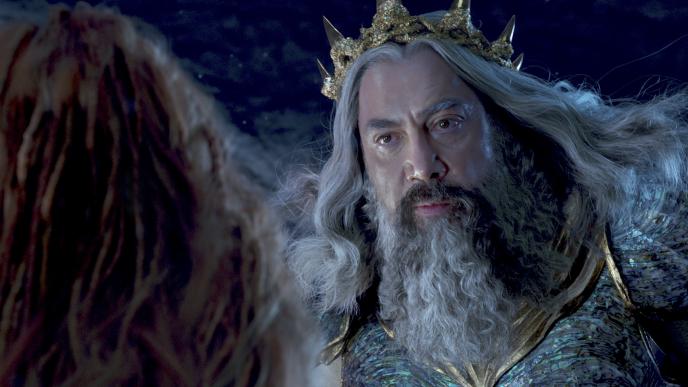
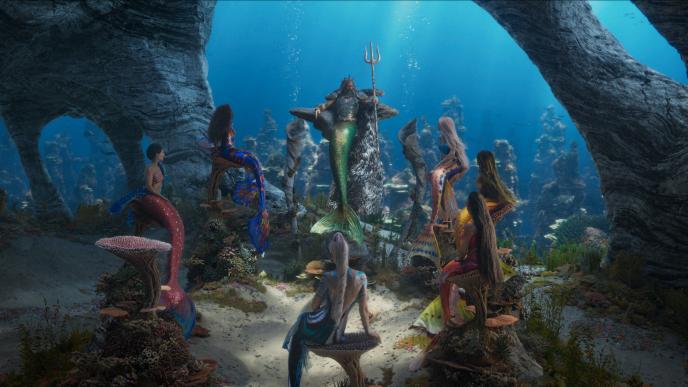
Dinglehoppers At The Ready
“The team at Walt Disney Studios gave us a fantastic brief for all of the mermaids,” continues Kind. “Triton’s seven daughters each represent one of the seven seas, and so from the outset it was well-established that they would all look very different.”
Framestore’s studio in Montréal took the lead in building digital doubles for Ariel’s sisters, while the development of the hair simulation was shared between the studios in London and Mumbai. “It was really a global collaboration to make sure that we did these characters justice,” comments Kind. “The hair especially was such a big thing for us to get right, figuring out how these different hair textures would move under the water - as obviously, a strand in a very tight curl would have a drastically different movement than a strand of straight or wavy hair.” Once again, the team were inventing their own laws of physics, creating a complex simulation to allow all of the hair types to move naturally, without obscuring the performance of the actors.
“To meet the brief it was really just testing, testing and more testing, using various techniques and a suite of very good animations, to push the hair to the max,” explains Lead Creature Effects Technical Director Steve Sandles. “Then as we perfected the look and movement, we began to dive more into the detail of how the hair needs to move and interact with the characters.”
“Realistically, when we’re underwater, our hair wants to fan out and float. But that would be distracting, and not give the kind of visual we wanted,” explains Animation Supervisor Pablo Grillo. “So we added some weight to keep it floating, but held together, to give a stark contrast to when the character is in motion and the hair moves more fluidly. It’s about maintaining the magic - creating something believable, without shattering the illusion.”
“The Disney team loved our hair and fin simulations from day one, though just about every hair simulation received art direction notes, either for continuity or for dramatic purposes,” continues Sandles. “The technological advances in hair simulation enabled us to spend artist-hours where needed, using our skill and vision to elevate the final visuals, rather than doing tasks that could otherwise be (and were) automated.”


